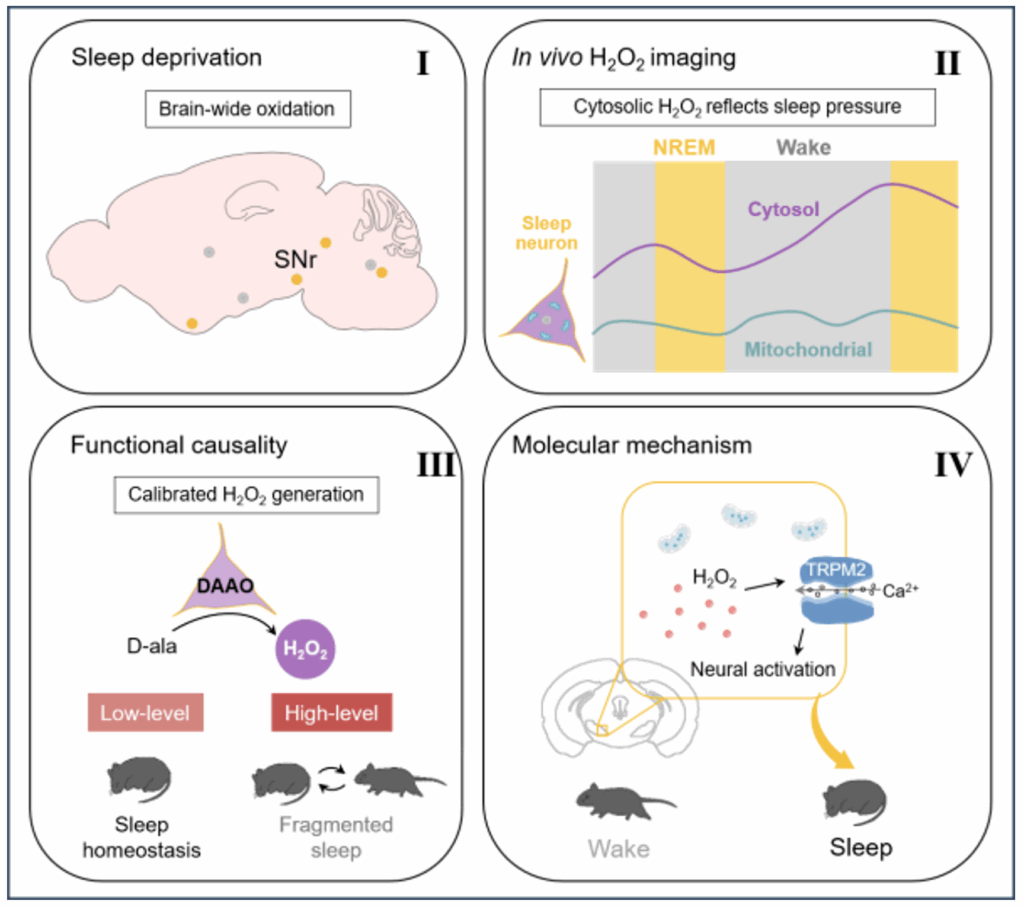https://www.cas.cn/syky/202505/t20250519_5068970.shtml
https://www.cell.com/cell-metabolism/abstract/S1550-4131(25)00254-2
Sleep could protect animals from oxidative damage, yet the dynamic interplay between the redox state and sleep homeostasis remains unclear. Here, we show that acute sleep deprivation (SD) in mice caused a general increase in brain oxidation, particularly in sleep-promoting regions. A team from the CAS Center for Excellence in Brain Science and Intelligence Technology has used In vivo imaging of intracellular hydrogen peroxide (H2O2). Real-time dynamics revealed that in nigra sleep neurons, the increase in cytosolic but not mitochondrial H2O2 reflects sleep debt and tracks spontaneous wakefulness by positively correlating with wake duration. By controllably manipulating intraneuronal H2O2, the researchers discovered that H2O2 elevation is required for compensatory sleep and causally promotes sleep initiation, at least partly dependent on transient receptor potential melastatin 2 (TRPM2) channel. However, excessive H2O2 induced brain inflammation and sleep fragmentation. The study demonstrates intraneuronal H2O2 as a crucial signaling molecule that translates brain redox imbalance into sleep drive and underscores the significance of oxidative eustress in sleep homeostasis.

